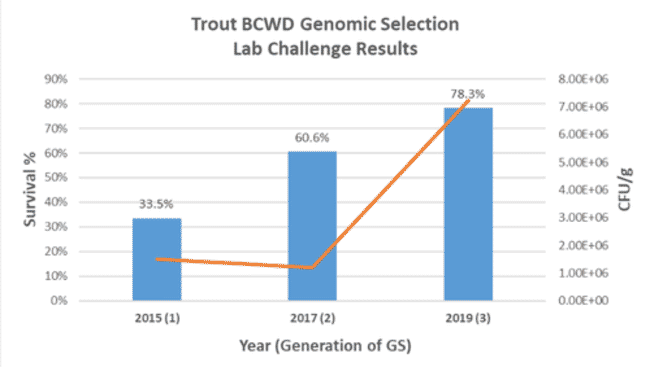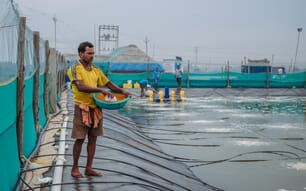Research conducted by the United States Department of Agriculture (USDA) and Troutlodge applied genomic selection for BCWD resistance to three generations of Troutlodge broodstock and resulted in a challenge survival increasing from 33.5 percent in 2015 to 78.3 percent in 2019 – an improvement of 134 percent.

Infectious diseases remain the single largest cause of production-related mortality in the rainbow trout industry, accounting for 81 percent of the total losses in 2011. Flavobacterium psychrophilum, the bacteria that causes BCWD, causes substantial losses and is endemic worldwide.
The pathogen causes outbreaks of both BCWD and rainbow trout fry syndrome, of which outbreaks can cause mortality of up to 85 percent. A significant amount of research has been done in attempts to develop protection from F. psychrophilum, however no effective vaccine has yet been produced, and the molecular pathogenesis involved with infections are not well understood.
Antibiotic approaches for treatment and prevention of outbreaks have been widely used, however medication adds to production costs in both materials and labour, and the efficacy is variable as antibiotic resistant bacteria are continually evolving. For these reasons Flavobacterium psychrophilum continues to be a significant burden to trout aquaculture worldwide.
Methodology
In the disease challenge representatives from Troutlodge’s nucleus populations were shipped as eggs to the USDA. At approximately 1g, fry were IP injected with F. psychrophilum at the prescribed amount (Figure 1). Mortality was recorded daily for 21 days.

Results of BCWD laboratory challenges conducted by the USDA on Troutlodge’s May strain. The graphic shows generational improvements in survival from 2015 to 2019 as a result of genomic selection. © Troutlodge



